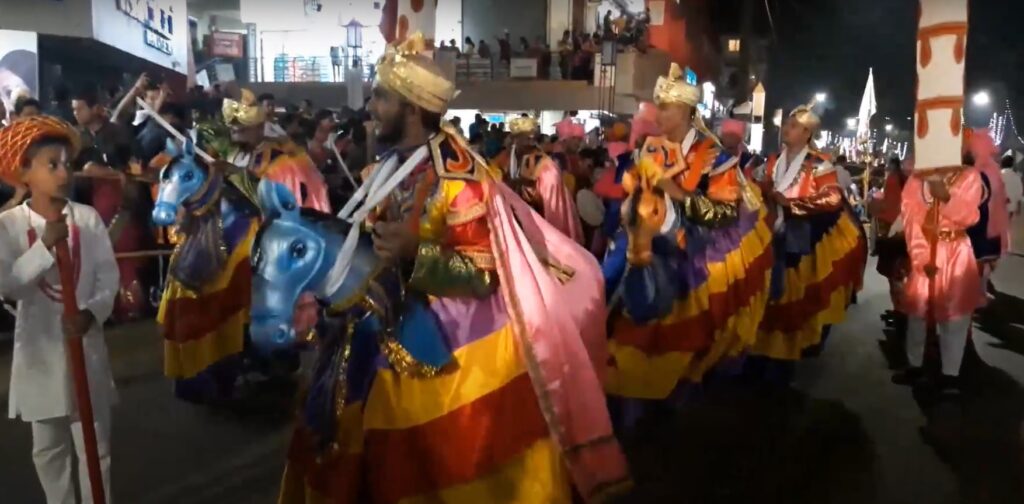This folk dance is named Ghode Modini because it involves movements like a horse. This dance is done in remembrance of the Maratha rulers’ victory in Goa over the Portuguese. Literally, the word ghode means horse, and modini means happy.

Ghode Modini folk dance is a major attraction during the Shigmo festival during harvest season in Goa. This dance is popular in the Talukas part of Goa. It is performed regularly where Marathas used to rule.
Ghode Modini Costume
As a prop, a wooden horse is used. Horses are well decorated with colorful clothes and their heads with colorful flowers. Dancers also wear colorful clothes (Rajput clothes) and Pagdi which Marathas used to wear, along with ghungroo on their ankles.
There is also a wooden mask used by dancers. This mask is considered holy and is lifted by members only when they have to dance.
Dance Performance
Dancers use movements to fake fighting in this dance, swaying swords in a manner of hitting their enemy. They move their bodies on the beat of drums along with the swords.
It is said that this dance was brought to Goa by the people of northern India. This is the reason why dancers wear Rajput costumes.
Ghode Modini Stories
In this dance, warriors are praised when they were in war with the Portuguese. Ghode Modini can also be called dummy dancers with swords. In some parts, it may be known with this name only. For different communities, this dance means different. For some, it represents war which was fought to free their village.
Earlier, one of the dancers used to wave a white cloth while standing behind the other dancers. There is no clear knowledge as to why this was done. But in recent performances, this practice has ceased. Dancers march with clothes in their hands, it shows their strength and bravery. Ghode Modini marks the victorious return of Maratha warriors from the war.
It is said that if the Ghodemodini dance is performed in the village then thieves will be scared of attacking the village. There are stories told by villagers about how robbers run away from the village after ghodemodini was performed in the village.
Music Instruments
Drums are used in this dance to provide a warlike scene. The types of drums used are Tasha or Taaso, Cymbals, and Dhol. Tasha base is made of copper or brass and the top is made of goatskin.
